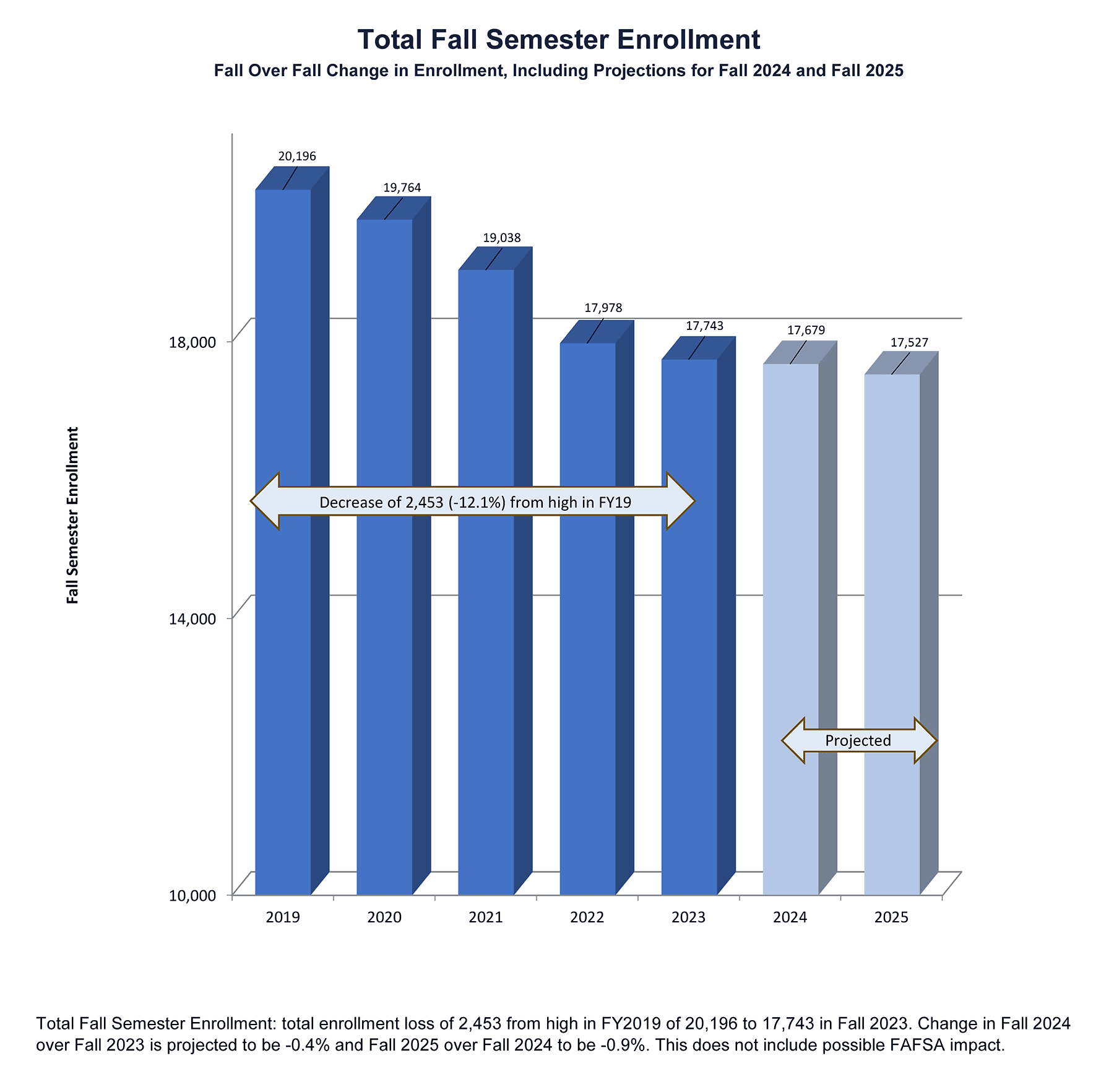Dear Colleagues,
As we move deeper into the spring semester, we’re gaining a fuller sense of our budgetary picture ahead of the 2024-25 academic year. In short: The University continues to face significant financial headwinds that demand our diligence. In this update, I’ll distill our latest fiscal projections.
First, I want to share enrollment trends and our forecast for Fall 2024 and 2025.

The chart below captures the financial implications of declining enrollment. You have heard me say this repeatedly: Enrollment equals budget. Roughly 88% of UNCG’s revenue is enrollment dependent. This includes state appropriations, tuition, and fees. The bottom line is a $29 million loss between 2019 and 2025. Note: with the UNC System Board of Governors approving our 2.2% fee increase, fee revenue is projected to be relatively flat which mitigates the projected loss from a decrease in headcount. The in-state undergraduate tuition freeze will remain in effect for the eighth consecutive year.

Data for FY2019-FY2023: Annual Fiscal Profiles; Financial Reports – Finance (uncg.edu)
Over the past four years, we have addressed the permanent loss several ways:
- We have made yearly, permanent budget reductions, each limited to single digits (percentage wise).
- As I noted in my Feb. 27 communication, the University’s overall budget reduction for 2024-25 is 1.99%, or $3.9 million — a permanent cut to help address a deficit of $13.5 million (which includes such things as inflation, deferred maintenance, and increased financial aid for students). We still need to make up the difference in other ways.
- We have taken a hard look at our workforce and reduced costs. Our key steps include a disciplined approach to filling open positions, using a dual-approval process; a reduction in administrators and their administrative staff; and reductions in staffing through unit reorganizations to improve efficiency without compromising quality.
- We have tapped (and continue to tap) into reserves to protect the academic core and prevent double digit cuts.
Our guiding principle has been to protect our academic core as much as possible and to protect people as much as we can (e.g. applying vacant positions to our budget deficit instead of instituting widespread layoffs). The upshot is that this is not a long-term strategy.
Looking ahead, we expect challenges for the foreseeable future. Unfortunately, we expect at least a 0.4% decrease year-over-year from our Fall 2024 undergraduate headcount and looking towards Fall 2025, another 1%. This is a consequence largely of the smaller cohorts enrolled in recent years. Over the next several years, cohort drag will continue to depress our numbers. In addition, struggles with the FAFSA could further dent our new undergraduate enrollment in Fall 2024.
We know we’re not unique in our challenges. Colleges and universities across the country are working through demographic, competitive, and other pressures tied to profound generational and social shifts. As I’ve expressed before, the moment presents opportunity — a chance to chart a course that better uplifts our students and communities for years to come. I invite you to join me in leveraging this opportunity, learn more about the higher education landscape, and engage in necessary change.
Thank you for your dedication and for all your hard work. I’ll continue to keep you updated with our latest information and next steps.
Sincerely,
Franklin D. Gilliam, Jr.
Chancellor